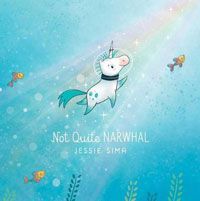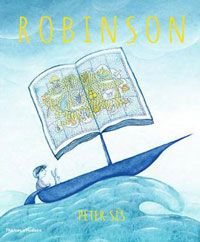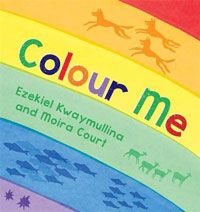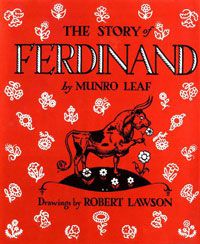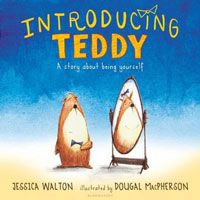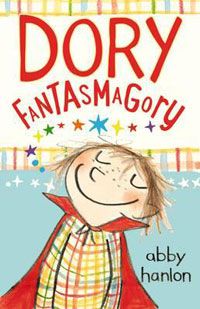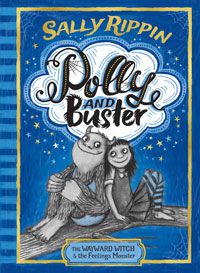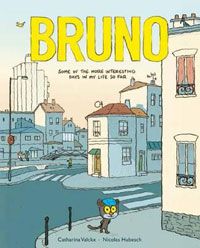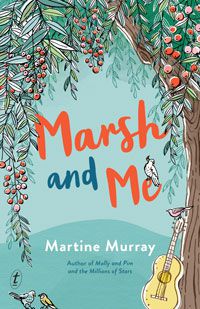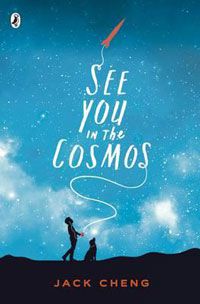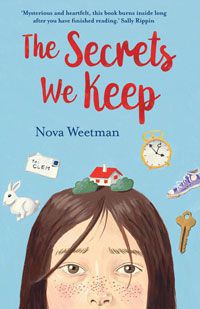We often tell kids ‘just be yourself’ – but sometimes, being proudly different is the hardest thing in the world.
Here are some recommended stories that show the challenges and joys of allowing yourself to be uniquely individual. From characters who can’t find their place in-between two groups, to unlikely pacifists, free-thinkers and genuine oddballs, there are plenty of stories to soothe and encourage children who have to go out on a limb to be true to their selves.
PICTURE BOOKS
Not Quite Narwhal by Jessie Sima
Kelp the unicorn has been raised in the ocean in a family of narwhals, but has never been fully at home in the water. A chance sighting of some land-dwelling unicorns seems to provide the answer to his real identity, but on land Kelp yearns for his sea family. Luckily Kelp finds a way to belong to two families at once, and there’s plenty of love, acceptance and rainbows to be had. For ages 3 and up.
Robinson by Peter Sís
A young boy dresses as his favourite character, Robinson Crusoe, for his school costume day, even though his friendship group has all agreed they should go as pirates. When he’s teased by his schoolmates for his strange and furry costume, the boy escapes into a fevered, dreamy Crusoe-worthy island adventure. Through his fantasies, he finds the strength to own his costume, and gain acceptance from his friends.
Author-illustrator Sís, really did dress up as Robinson Crusoe at school, and readers will take heart in the photo of him in his real-life costume at the end of the book. For ages 3 and up.
Colour Me by Ezekiel Kwaymullina and Moira Court
This vibrant picture book uses the rainbow as a tool to celebrate difference in our world. Each colour is explored with gentle and evocative text, alongside examples from nature. Red foxes, dazzling suns and energetic dingoes are shown with layers of screen-printing and stencils, and all of the colours are brought together satisfyingly at the book’s end. Very young readers aged 1 and up won’t be able to look away from this lovely read-aloud about strength in diversity and in unity.
The Story of Ferdinand by Munro Leaf
Everyone’s favourite peace-loving bull, Ferdinand, simply cannot and will not meet the expectations of others in the bullring. After being chosen and dubbed ‘Ferdinand the Fierce’ (due to a misunderstanding involving a bee), Ferdinand obeys his true nature and eats flowers instead of fighting matadors. A classic from the 1930s, this is one for kids who prefer to keep life mellow and quiet. For ages 3 and up.
Introducing Teddy by Jessica Walton and Dougal Macpherson
When Errol wonders why his usually sunny best friend Thomas the teddy is feeling so sad, Thomas reveals that she is actually a girl teddy and would prefer to be called Tilly. Errol and Tilly’s other friends meet this news with acceptance and love, and the group of friends are able to continue their games and activities as usual. This is a sweet and gentle introduction to gender identity, and pays tribute to the bravery involved in letting our friends see us authentically. For ages 2 and up.
Other recommended titles:
- Danny Blue’s Really Excellent Dream by Max Landrak
- Don’t Leap Larry! by John Briggs and Nicola Slater
- Erik the Lone Wolf by Sarah Finan
- Woolf by Alex Latimer and Patrick Latimer
- Princess Smartypants by Babette Cole
- Dogs Don’t Do Ballet by Anna Kemp and Sara Ogilvie
- The Cow who Climbed a Tree by Gemma Marino
- The Very Noisy Baby by Alison Lester
JUNIOR FICTION
Dory Fantasmagory by Abby Hanlon
The youngest of three, Dory truly is one-of-a-kind. Her imagination is overactive to the point that her everyday life is populated with imaginary cat friends, monsters and a terrifying persona called Mrs Gobble Gracker. She gets lost in pretending to be a dog, asks constant philosophical questions and frequently loses her cool. Despite some exasperation from her older siblings, Dory is tolerated, loved and appreciated by her family for her wild ways and bad moods. This funny illustrated story is a comforting and entertaining read for kids who might be told that they’re ‘too much’. For ages 5 and up.
The Wayward Witch and the Feelings Monster by Sally Rippin
Polly the witch and Buster the monster are best friends, even if they’re not supposed to be. In secret, they support each other wholeheartedly in overcoming their challenges: Polly has trouble getting muddled with reading and spells, and Buster has a habit of shrinking and growing from strong emotions. The friend’s loyalty is tested to the max due to peer pressure, the desire for popularity, teasing and prejudice. When you’re different it’s hard to stick your head out, but these ultimately loyal best friends rise to the challenge. For ages 7 and up.
Bruno by Catharina Valckx and Nicolas Hubesch
This is a strange and uncategorisable book, very suitable for strange and uncategorisable children. A little bit chapter book, a little bit picture book, and kind of a graphic novel , Bruno is composed of six stories about Bruno the cat-person’s extraordinary ordinary days, from almost perfect ones to stupid ones. Flying fish, a horse called Ringo, a pleasant power outage, escalator-riding and a car full of wild boars all feature. This is perfect for quirky, silly and wonderfully unique kids. For ages 5 and up.
Other recommended titles:
- The Super Moopers series by Fiona Harris and Scott Edgar
- Olga and the Smelly Thing From Nowhere by Elise Gravel
- Diva and Flea by Mo Willems and Tony DiTerlizzi
- The Mango & Bambang series by Polly Faber and Clara Vulliamy
MIDDLE FICTION
Marsh and Me by Martine Murray
Joey is a sensitive, deep-thinking and musical boy with only one friend, Digby. When he meets Marsh, an oddly-dressed, tree-house-dwelling, Serbian-folk-song-singing enigma, he enters into an odd and challenging friendship that will change both children. Joey’s journey from awkwardness and worry, to confidence and self-appreciation is realistic and reassuring. For ages 9 and up.
See you in the Cosmos by Jack Cheng
Carl Sagan-obsessed 11-year-old Alex is on a mission to make and launch into space his own Golden Record, a record of his life for intelligent lifeforms out there in the universe. Alex stands apart from his peers: he has an absent father, an unusual mother, a scientific mind, and has to take on many responsibilities beyond his age. On the way to a rocket festival, Alex falls in with two older travellers, who help him search for his dad. Despite, or maybe because of, his differences, Alex proves himself to be resilient and capable of creating his own sense of family. For ages 10 and up.
The Secrets We Keep by Nova Weetman
Clem is going through a tough time – her old house has burnt down, she and her father have had to move to a smaller place, and she has to start at a new school. When she tells a lie to smooth the way of a new friendship, Clem finds herself in a stressful and difficult situation. Can she afford to be honest if it means hurting a new friend and potentially losing the friendship? For ages 9 and up.
Other recommendations:
- The Bubble Boy by Stewart Foster
- Lingtang and the Pirate Queen by Tamara Moss
- The Wild Robot by Peter Brown
- Raymie Nightingale by Kate DiCamillo


